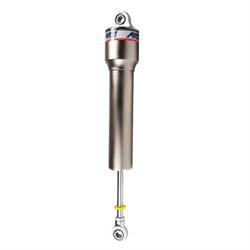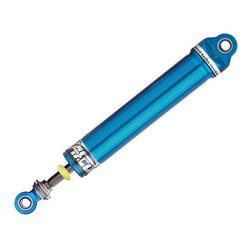Racing Shocks 101
What is a shock?
A shock is a timing device that controls the up and down movement on a race car. It will determine how fast or slow weight is transferred. Its purpose is to keep the tire on the racing surface.
Two Types of Shocks
Twin Tube/Dual Tube Shock
Also known as a two-tube or oil shock absorber, this device consists of two nested cylindrical tubes, an inner tube that is called the "working tube" or the "pressure tube", and an outer tube called the "reserve tube". At the bottom of the device, on the inside, is a compression valve or base valve. When the piston is forced up or down by bumps in the road, hydraulic fluid moves between different chambers via small holes or "orifices" in the piston. Finally, the shock energy is converted into heat and dissipates.
Pros and Cons
Pros Minimal gas pressure Minor Dents do not affect performance
Cons Smaller piston can limit dampening Lack of performance on a rough track
Mono Tube Shocks
Though it only has two pistons, the gas-pressurized, mono-tube shock consists of only the pressure tube. The pistons are called the working piston and the dividing or floating piston. They are completely separate from the shock's fluid and gas components. It also does not have a compression valve, because the role has been taken up by the dividing piston. Although it contains nitrogen gas, the gas in a mono-tube shock is under high pressure which helps support some of the vehicle's weight. No other shock absorber is designed to do this.
Pros and Cons
Pros Provides better control on rough tracks
Cons Dents in the body can cause performance problems and will require service or replacement Hurts driver feel on smooth, dry or slick tracks
Small Shock Body Type
A small body shock usually has 1 5/8” body and a smaller diameter shaft.
Pros and Cons
Pros Lighter weight helps with clearance
Cons Cannot dissipate heat causing shock fade if used on heavier cars and extreme heat
Small body shocks are meant to be used on Sprint Cars, Midgets, and Dwarf Cars. Cars that are not compatible are A modified, Stock or Late Model.
Large Body Shocks
Large body shocks have 2" bodies and larger diameter shafts.
Pros and Cons
Pros Very good on rough tracks as they can easily dissipate the heat More durable
Cons Causes clearance issues Relatively heavy
Large body shocks should be used on Modifieds, Stock Cars, Hobby Stocks and Late Models. Some of them can be used on sprint cars.
Shock Valving
What Valving Numbers Mean
How much force is needed to compress or extend the shock? The higher the number the more force needed to move the shock. A valving number may differ per brand or even per series of the same brand.
How to Read Shock Numbers
AFCO, Pro and QA1 shocks will always have the shock series first then the stroke of the shock compression numbers first and rebound second. Bilstein will have also list the series of shock first in the number the stroke. However, they will list rebound first on the shock then the compression.
Tie Down Shocks vs. Easy Up Shocks
A tie-down shock is used to keep the weight from transferring back off a tire. It will be easy to compress this shock, but hard to extend. The easy up shock is used to keep a car hiked up or weight off a tire. These shocks are easy to extend, but hard to compress.
Adjustable Shocks
The advantages of adjustable shocks are that they give you the ability to tune your shock without having to purchase multiple shocks. Customers are usually able to dial in a wide variety of valvings with either single or double adjustable. The downfall is the cost of purchasing the adjustable shock at first.
Shock Maintenance
Shocks should be taken off the car, and checked out, after every night. You should check to make sure the shock can be fully extended and compressed without any issues such as soft spots or binds. The shock should also be checked for leaks around the shaft and body. Shock bodies should be checked for dents. These things should happen after every race night. You should also dyno your shocks at least once a year.



